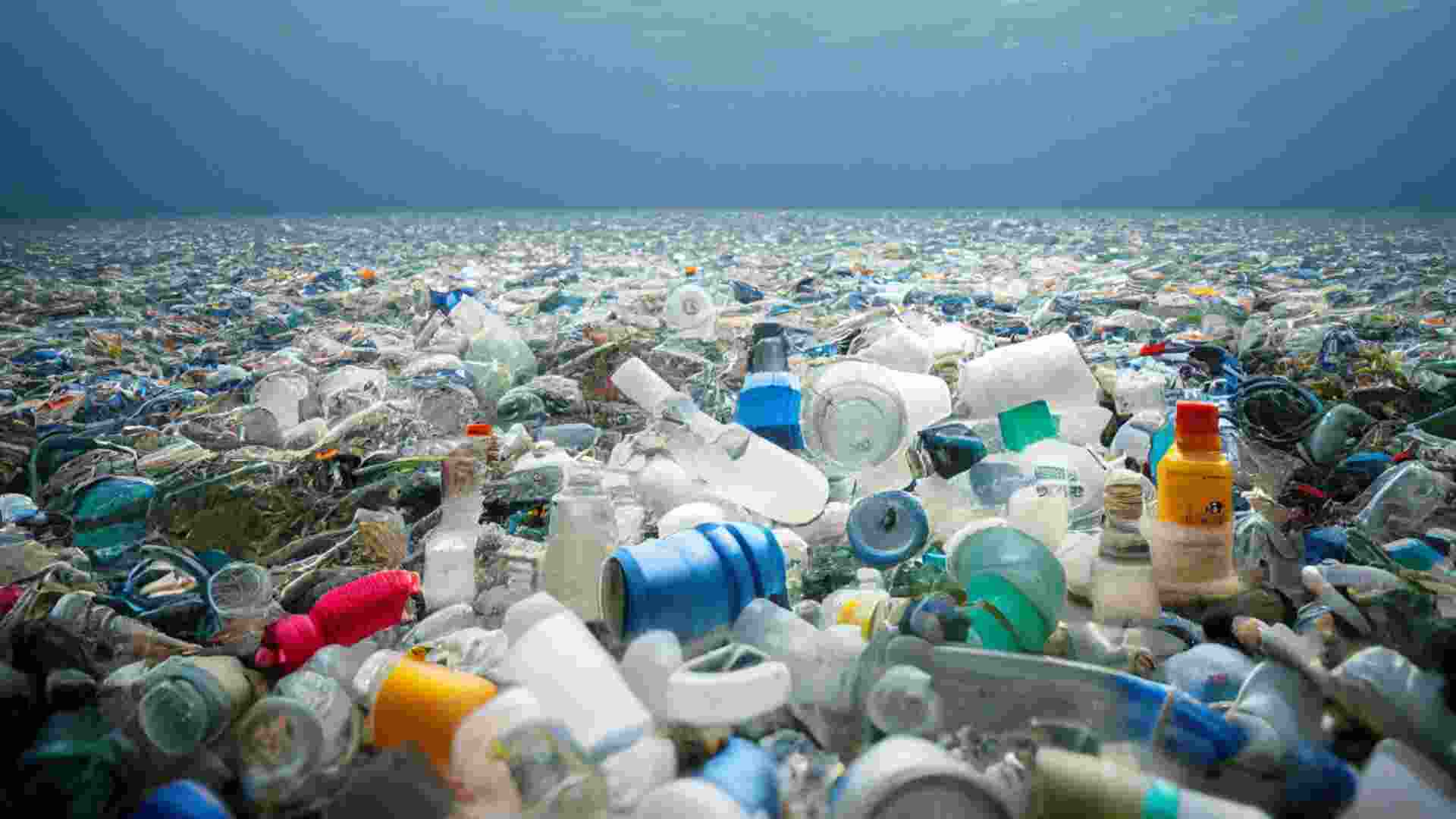As treaty negotiations for the first legally binding international treaty on plastic pollution continue, a study published in the journal *Nature* last week revealed that India contributes a fifth of the world’s plastic pollution. India burns around 5.8 million tonnes (mt) of plastic annually and releases another 3.5 mt into the environment as debris, totaling 9.3 mt of plastic pollution each year. This figure surpasses the next highest contributors: Nigeria (3.5 mt), Indonesia (3.4 mt), and China (2.8 mt), exceeding previous estimates.
The research, conducted by University of Leeds scholars Joshua W. Cottom, Ed Cook, and Costas A. Velis, estimates that globally, about 251 mt of plastic waste is produced each year, enough to fill roughly 200,000 Olympic-sized swimming pools. Of this waste, approximately a fifth — 52.1 mt — is “emitted” into the environment unmanaged.
“Managed” waste refers to the plastic waste collected by municipal bodies, which is either recycled or sent to a landfill, with the latter being the most common outcome. In contrast, “unmanaged” waste is plastic that is burned in open, uncontrolled fires, releasing harmful pollutants such as fine particulates and toxic gases like carbon monoxide, which have been linked to serious health issues, including heart disease, respiratory disorders, cancer, and neurological problems. Unmanaged waste also includes plastic that ends up as debris in the environment, contaminating every imaginable location on Earth, from Mount Everest to the Mariana Trench.
Of the unmanaged waste, roughly 43%, or 22.2 mt, is unburned debris, while the remaining 29.9 mt is burned either in dumpsites or locally.
A key finding of the study is the noticeable Global North-South divide in plastic pollution. According to the study, “plastic waste emissions are highest across countries in Southern Asia, Sub-Saharan Africa, and South-eastern Asia.”
Approximately 69% (or 35.7 mt per year) of the world’s plastic pollution originates from 20 nations, none of which are High-Income Countries (HICs) — defined by the World Bank as countries with a gross national income per capita of $13,846 or more. Despite the fact that HICs, predominantly located in the Global North, generate higher plastic waste per capita than nations in the South, they do not rank among the top 90 polluters because most HICs have nearly 100% waste collection coverage and controlled disposal.
In the Global South, open burning is the primary method of plastic pollution, unlike the Global North, where uncontrolled debris is the predominant form. This disparity highlights the inadequacies or complete absence of waste management systems and public infrastructure in the Global South. However, researcher Costas Velis emphasized that “we shouldn’t put the blame, any blame, on the Global South… [or] praise ourselves about what we do in the Global North in any way,” pointing out that waste disposal capabilities largely depend on government-provided services.
The study comes at a critical time, as ongoing treaty negotiations aim to establish the first legally binding international treaty on plastic pollution. The UN Environmental Assembly agreed in 2022 to develop such a treaty by the end of 2024. However, there is considerable disagreement about its content. Fossil-fuel-producing countries and industry groups view plastic pollution primarily as a “waste management problem” and advocate for focusing on waste management rather than curbing production. In contrast, countries in the European Union and Africa, forming the “High Ambition Coalition,” call for phasing out single-use plastics and imposing production limits.
This coalition argues that merely managing plastic waste to eliminate pollution is impractical given the scale of plastic waste generation and the complexity of recycling. A study published in *Science Advances* in April found a direct correlation between increased plastic production and plastic pollution, with a 1% increase in production leading to a 1% rise in pollution.
Critics of the recent study argue that it reinforces the narrative that plastic pollution is solely a “waste management problem.” Neil Tangri, senior director of science and policy at GAIA, a global network advocating for zero waste and environmental justice, told The Associated Press, “It risks us losing our focus on the upstream and saying, hey now all we need to do is manage the waste better. It’s necessary but it’s not the whole story.”
Interestingly, plastics industry groups have praised the study, with Chris Jahn, council secretary of the International Council of Chemical Associations, stating, “This study underscores that uncollected and unmanaged plastic waste is the largest contributor to plastic pollution.”























